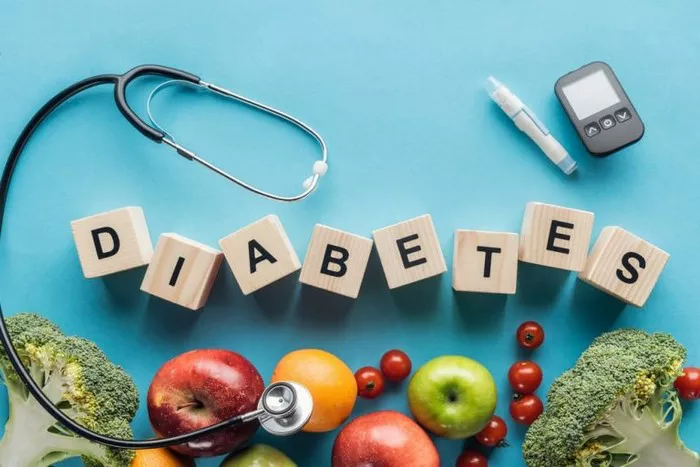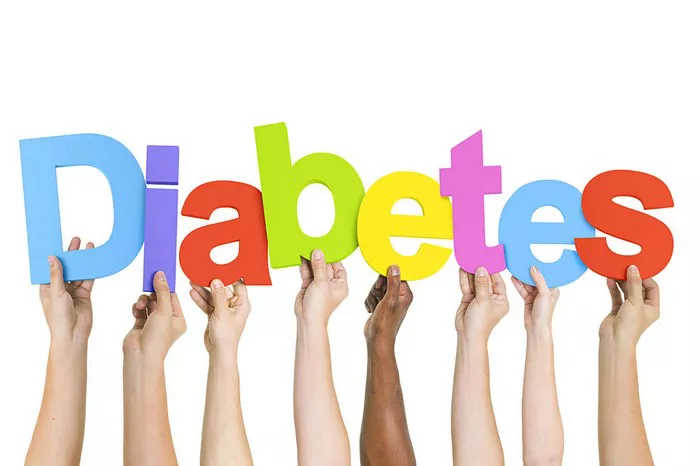Type 2 diabetes is a complex metabolic disorder characterized by insulin resistance and, in later stages, insulin deficiency. Insulin, a hormone produced by the pancreas, plays a central role in regulating blood glucose levels. In type 2 diabetes, disturbances in insulin action lead to impaired glucose metabolism, contributing to elevated blood sugar levels and associated complications. This article explores the multifaceted functions of insulin, the mechanisms underlying insulin resistance, the consequences of insulin deficiency, and the therapeutic strategies aimed at managing type 2 diabetes through insulin-based interventions.
The Fundamental Role of Insulin
Insulin is primarily synthesized and secreted by beta cells within the islets of Langerhans in the pancreas. Its main functions revolve around maintaining normal blood glucose levels, promoting energy storage, and facilitating cellular uptake of glucose. Here’s how insulin accomplishes these tasks in a healthy individual:
Glucose Uptake: After a meal, carbohydrates are broken down into glucose, which enters the bloodstream. Elevated blood glucose levels stimulate the release of insulin from the pancreas. Insulin then binds to specific receptors on cell surfaces, facilitating the transport of glucose into muscle, adipose (fat), and liver cells. This process reduces blood glucose levels, ensuring that cells receive the energy they need for metabolism and function.
Glycogen Synthesis: Insulin promotes the conversion of excess glucose into glycogen, a storage form of glucose found primarily in the liver and muscle cells. This glycogen serves as a readily available energy reserve that can be mobilized when blood glucose levels drop, such as during fasting or physical exertion.
Lipogenesis: In addition to glucose metabolism, insulin facilitates the synthesis of lipids (fats) from glucose and fatty acids. This process, known as lipogenesis, occurs mainly in adipose tissue and is essential for storing excess energy as triglycerides.
Protein Synthesis: Insulin enhances the uptake of amino acids into cells and promotes protein synthesis, particularly in muscle tissue. This helps maintain muscle mass and supports various cellular functions essential for overall health.
Inhibition of Glucose Production: Insulin suppresses glucose production in the liver through a process called gluconeogenesis. By inhibiting the conversion of non-carbohydrate sources (such as amino acids and glycerol) into glucose, insulin helps prevent excessive glucose release into the bloodstream.
Mechanisms of Insulin Resistance
Insulin resistance is a hallmark of type 2 diabetes and occurs when cells throughout the body become less responsive to insulin’s actions. Despite the pancreas producing adequate amounts of insulin, the insulin-resistant cells fail to efficiently take up glucose from the bloodstream. This leads to elevated blood glucose levels (hyperglycemia) and compensatory hyperinsulinemia (high insulin levels). Several mechanisms contribute to insulin resistance:
Cellular Signaling Defects
- Impaired Insulin Receptor Function: Insulin binds to specific receptors on cell surfaces, initiating a cascade of intracellular signals that promote glucose uptake and other metabolic processes. In insulin-resistant states, these receptors may become less sensitive or downregulated, reducing the cell’s response to insulin.
- Intracellular Signaling Pathways: Downstream signaling pathways involved in glucose transport, such as insulin receptor substrates (IRS) and phosphatidylinositol-3-kinase (PI3K)/Akt pathways, may be disrupted or inhibited. This impairs the translocation of glucose transporters (GLUT4) to the cell membrane, reducing glucose uptake.
Lipid Accumulation and Inflammation
- Ectopic Lipid Deposition: Excessive accumulation of lipids (fatty acids and triglycerides) in muscle, liver, and adipose tissues can interfere with insulin signaling pathways. Lipid metabolites, such as ceramides and diacylglycerols, activate serine kinases that phosphorylate IRS proteins, thereby inhibiting insulin signaling.
- Chronic Inflammation: Adipose tissue, particularly visceral fat, secretes pro-inflammatory cytokines (e.g., TNF-alpha, IL-6) that impair insulin signaling and promote insulin resistance. This low-grade inflammation is often associated with obesity and contributes to systemic metabolic dysfunction.
Genetic and Hormonal Factors
- Genetic Predisposition: Genetic variants affecting insulin receptor function, IRS proteins, and other components of insulin signaling pathways can predispose individuals to insulin resistance and type 2 diabetes.
- Hormonal Imbalance: Hormones such as glucagon, cortisol, growth hormone, and adipokines (e.g., leptin, adiponectin) play roles in regulating glucose and lipid metabolism. Imbalances in these hormones, often seen in obesity and metabolic syndrome, can contribute to insulin resistance.
Consequences of Insulin Deficiency in Type 2 Diabetes
In type 2 diabetes, insulin resistance progressively worsens, leading to compensatory hyperinsulinemia as the pancreas attempts to overcome resistance by producing more insulin. Over time, however, beta cell dysfunction and depletion may occur, resulting in relative insulin deficiency. This dual defect—insulin resistance and insulin deficiency—results in chronically elevated blood glucose levels and contributes to the development of diabetes-related complications:
- Hyperglycemia: Persistent high blood glucose levels (hyperglycemia) can damage blood vessels, nerves, and organs throughout the body. Chronic hyperglycemia is associated with increased risk of cardiovascular disease, neuropathy (nerve damage), nephropathy (kidney disease), retinopathy (eye disease), and other complications.
- Pancreatic Beta Cell Dysfunction: Prolonged exposure to high glucose and lipids can impair beta cell function and survival, leading to progressive beta cell dysfunction and reduced insulin secretion.
- Metabolic Syndrome: Insulin resistance is often associated with other metabolic abnormalities, including dyslipidemia (abnormal lipid levels), hypertension (high blood pressure), and central obesity. Together, these factors constitute metabolic syndrome, a cluster of conditions that increase the risk of cardiovascular disease and type 2 diabetes.
Therapeutic Approaches to Managing Type 2 Diabetes with Insulin
Management of type 2 diabetes focuses on improving insulin sensitivity, enhancing insulin secretion (when possible), and maintaining optimal blood glucose levels to prevent complications. Therapeutic approaches include lifestyle modifications, oral medications, and insulin therapy:
Lifestyle Modifications
- Dietary Changes: Emphasizing a balanced diet rich in fruits, vegetables, whole grains, lean proteins, and healthy fats can improve insulin sensitivity and promote weight management.
- Physical Activity: Regular exercise, including aerobic activities (e.g., brisk walking, swimming) and resistance training, enhances insulin sensitivity, promotes glucose uptake by muscles, and aids in weight control.
- Weight Management: Achieving and maintaining a healthy weight reduces insulin resistance and improves metabolic parameters.
Oral Medications
- Metformin: The first-line medication for type 2 diabetes, metformin reduces hepatic glucose production, improves insulin sensitivity in muscle tissues, and may modestly promote weight loss.
- Sulfonylureas and Meglitinides: These medications stimulate insulin secretion from pancreatic beta cells, helping to lower blood glucose levels.
- Thiazolidinediones (TZDs): TZDs improve insulin sensitivity by activating peroxisome proliferator-activated receptor gamma (PPAR-gamma), a nuclear receptor involved in glucose and lipid metabolism.
- GLP-1 Receptor Agonists: These injectable medications mimic the action of glucagon-like peptide-1 (GLP-1), which enhances glucose-dependent insulin secretion, suppresses glucagon secretion, and promotes satiety.
- SGLT-2 Inhibitors: These medications inhibit sodium-glucose cotransporter-2 (SGLT-2) in the kidneys, reducing glucose reabsorption and increasing glucose excretion in urine.
Insulin Therapy
- Basal Insulin: Long-acting insulin analogs (e.g., insulin glargine, insulin detemir) provide a steady level of insulin throughout the day, mimicking basal (background) insulin secretion.
- Bolus Insulin: Rapid-acting insulin analogs (e.g., insulin lispro, insulin aspart) are taken before meals to control postprandial (after-meal) glucose spikes.
- Premixed Insulin: These formulations combine both basal and bolus insulin components in fixed ratios, offering simplified dosing for some patients.
- Insulin Delivery Systems: Insulin can be administered via traditional insulin syringes, insulin pens, or insulin pumps, depending on patient preferences and treatment goals.
Initiating and Adjusting Insulin Therapy
Initiating insulin therapy in type 2 diabetes is typically considered when glycemic targets are not achieved with oral medications and lifestyle modifications alone. The approach to insulin initiation and titration involves:
- Starting Dose: Initiate with a basal insulin dose (e.g., 10 units/day) and titrate based on fasting blood glucose levels, aiming for a target range (e.g., 80-130 mg/dL).
- Mealtime Insulin: As needed, add rapid-acting insulin before meals to manage postprandial glucose excursions, starting with a conservative dose and adjusting based on carbohydrate intake and blood glucose monitoring.
- Monitoring: Regular monitoring of blood glucose levels (fasting, pre-meal, post-meal) guides insulin dose adjustments to achieve optimal glycemic control while minimizing the risk of hypoglycemia.
Benefits and Considerations of Insulin Therapy
Benefits:
- Effective Glycemic Control: Insulin is the most potent glucose-lowering therapy and can effectively reduce HbA1c levels when used appropriately.
- Flexibility: Different insulin formulations and delivery methods offer flexibility in treatment regimens.
- Cardiovascular Benefits: Some newer insulin formulations have shown cardiovascular benefits in clinical trials.
Considerations:
- Hypoglycemia: Insulin therapy carries the risk of hypoglycemia (low blood sugar), particularly if dosing is not carefully monitored.
- Weight Gain: Insulin use may lead to weight gain, primarily due to its anabolic effects on fat and protein metabolism.
- Patient Education: Proper education and self-management skills are crucial for successful insulin therapy, including injection technique, blood glucose monitoring, and recognition/treatment of hypoglycemia.
Emerging Therapies and Future Directions
Advances in diabetes research continue to explore new therapeutic avenues for managing insulin resistance and improving outcomes in type 2 diabetes:
GLP-1 Receptor Agonists and SGLT-2 Inhibitors: These newer classes of medications have demonstrated cardiovascular and renal benefits beyond glucose lowering and are increasingly integrated into diabetes management algorithms.
Insulin Analogues: Ongoing research aims to develop ultra-long-acting basal insulins and faster-acting mealtime insulins to enhance convenience and efficacy.
Combination Therapies: Fixed-dose combinations of insulin with other antidiabetic agents are being explored to simplify treatment regimens and improve adherence.
Artificial Pancreas Systems: Closed-loop insulin delivery systems, also known as artificial pancreas systems, automate insulin delivery based on continuous glucose monitoring, offering the potential for tighter glycemic control and reduced hypoglycemia risk.
See also: What To Add To Metformin To Lower A1c
Conclusion
Insulin plays a critical role in regulating glucose metabolism and maintaining overall metabolic health. In type 2 diabetes, disturbances in insulin action—characterized by insulin resistance and subsequent insulin deficiency—contribute to chronic hyperglycemia and increase the risk of cardiovascular and other complications. Understanding the mechanisms of insulin resistance and the consequences of insulin deficiency underscores the importance of personalized diabetes management strategies, including lifestyle modifications, oral medications, and insulin therapy. Ongoing research and therapeutic advancements aim to optimize treatment outcomes and improve quality of life for individuals living with type 2 diabetes.
As our understanding of diabetes pathophysiology deepens and therapeutic options expand, the goal remains steadfast: to achieve optimal glycemic control, prevent complications, and enhance overall well-being for patients with type 2 diabetes.
Related topics:
What’s the New Injection for Type 2 Diabetes



























